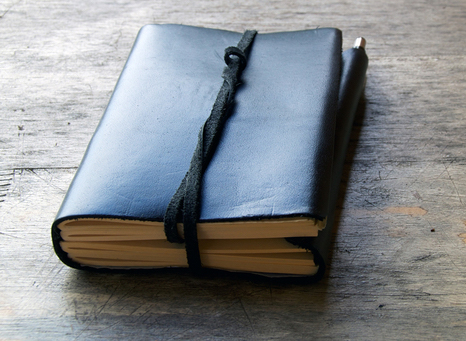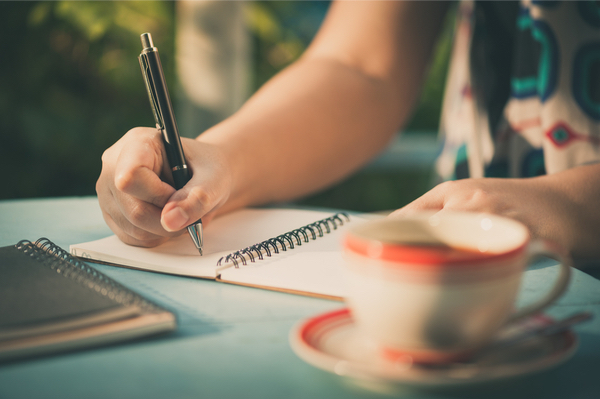The best thing about going back to school was always the new stationery, so now that the new term has started, get that start of term vibe with a shiny new journal…
Spending time doodling in your childhood notebook (novelty pen optional) was part and parcel of the school day for many of us growing up.
So, you can’t have missed the recent revival of the humble diary. Rebranded for the 21st century as ‘journalling’, putting pen to paper in a variety of artistic – and self-developing – ways has become the cutting-edge habit to cultivate.
 All kinds of notebooks
All kinds of notebooks
Whether it’s an intricate bullet journal, a quote-peppered gratitude diary, or a leather-bound goal tracker, there’s a notebook somewhere with your name on it.
Depending on whether you want to up your productivity, improve your mental health or reach yearned-for goals, there’s a journalling style to help you best navigate your path.
‘Writing is a powerful tool that we’ve long used to give shape to emotions,’ says Megan Hayes, psychologist and author of Write Yourself Happy (£14.99, Gaia). ‘Whoever you are now, journal writing can serve as a map of who you are becoming.’
Writing about your emotions was first found to have an impact back in the 1980s by the American social psychologist James Pennebaker. He discovered that writing about difficulties led to improved health and even better educational performance.
Backed by research
Since then, science has revealed that writing goals down makes you more likely to reach them, with research at Dominican University showing that people who did just that had a 42 per cent greater likelihood of success.
Keeping a food diary, for example, can double weight loss, according to a study of 1,700 people published in the American Journal of Preventive Medicine.
Ready to write your way to wellbeing? Select your own journalling style and get started.
 Positive journals
Positive journals
Science has shown how writing about your feelings – from heartbreak to illness – can help the brain overcome emotional upsets and leave you feeling happier.
‘So, if writing when things go wrong can help you, what happens if we write when things go right?’ says Megan.
‘Journalling-as-usual is a way of processing the events of your life, whereas “positive journalling” appears to offer us a fulfilling sense of progressing in life.’
When you write through the lens of positivity your perspective shifts, bringing your attention to things you may not have noticed before and helping you to frame the day as you wish.
Is it for you?
If you want to engage with and challenge what happens in your life, rather than just reacting, positive journalling could be for
you. It can shift your perspective, giving you a greater feeling of direction and control.
How to get started:
Begin with the prompt of a single emotion such as joy, hope or awe. You don’t have to feel positive emotions; simply think and write about them.
Writing about positive emotions puts them on your radar and helps you notice them in everyday life.
The gratitude journal
Many wise people have noted thoughts along the lines that your energy flows where your attention goes. Reset your mental compass to what you already value and you’ll release your brain from its natural tendency to focus on threats and worries and build on the positives in your life.
Just eight weeks of writing in a gratitude diary each day has been shown to improve mood and sleep and even reduce inflammation, according to research at UC San Diego.
By writing down what you are grateful for, you’ll create more optimistic cycles of thinking, allowing your sense of purpose to grow clearer and stronger.
‘Gratitude is a cornerstone of many of the world’s religions for a reason: because it makes us feel fulfilled, connected and brings a sense of purpose,’ explains Megan. ‘Think of practising gratitude as lifting the tablecloth of any given moment and inspecting the table legs underneath, noting the pillars that support everything you take for granted.’
Is it for you?
Getting a gratitude habit can help everyone but is especially useful in times of stress and during events you feel you have little control over.
Noticing what’s good in your life helps you focus on the positives and gets you out of the cycle of negative thinking.
How to get started
This is one of the easiest, most powerful and least time-consuming journals to
keep. Simply write down three things each day you are grateful for and why. If you enjoy the process, invest in a guided gratitude journal to help you develop the habit.
The bullet journal
This is the supercharged to-do list that sparked the new buzz about journalling. The BuJo (as ardent fans fondly call it) is a checklist-style system in which you jot down daily tasks in an indexed calendar then either tick them off, re-schedule or file to other parts of the journal.
Using symbols to cross-reference and track goals, it acts as an external hard-drive for your memory.
By breaking down big tasks into bite-sized pieces, you can analyse your needs and move from stressed to productive.
The bullet journal can be a showy, Instagramable approach to journalling (do a quick web search and you’ll see elaborate pages filled with intricate designs) but it doesn’t have to be; its beauty lies in customising it to be whatever you want.
Is it for you?
If you are prone to procrastination or feeling overwhelmed, the bullet journal is ideal. The conscious mind can only deal with about three things at once, so a bullet journal can help your brain dump the rest until you are ready to tackle it.
How to get started:
All you need to get started is a notebook and pen. You can learn the basics of the system and how it works with BuJo inventor Ryder Carroll’s free YouTube video. It can be as simple or complex as you want.
 Morning pages
Morning pages
Designed as a way to boost creativity, ‘morning pages’ involve completing a few pages of stream-of-consciousness, longhand writing first thing each morning.
Pioneered by Julia Cameron, author of The Artist’s Way, they are a powerful tool to clear your head and make way for more important thinking and creativity.
Is it for you?
Although originally designed to help artists and writers ‘unblock’, silence negative self-talk and get ideas flowing, morning pages aren’t just for creatives.
If your brain feels fogged with too many thoughts or you feel crippled by perfectionism, this type of journalling can free up your mind and spark new ideas.
How to get started:
Grab a notebook, set your alarm a little earlier and write. It’s that simple. The key is not to overthink it. Write anything and everything that drifts into your mind. Quality is not the point, but quantity is – aim for around three pages.
The habit tracker
Whether it’s fitness, food, finances or sleep you want to get on top of, tracking your habits is a great way to boost self-awareness.
Writing everything down forces you to be honest with yourself about your habits and helps you pay close attention.
Committing a goal to paper also engages the logic-based left hemisphere of the brain, rather than just the imaginative right side, signalling to your subconscious you mean business.
Is it for you?
An essential tool if you have a specific goal, such as losing weight, logging alcohol units, getting more shut-eye or running a 5k.
How to get started:
Commit your goal to paper at the start of your journal and be specific. Next, set yourself a series of short-term goals that you can tick off as you achieve them. Each day, track your habit, being careful not to miss anything out.
Find out more about the many kinds of happiness you can find in your life.








